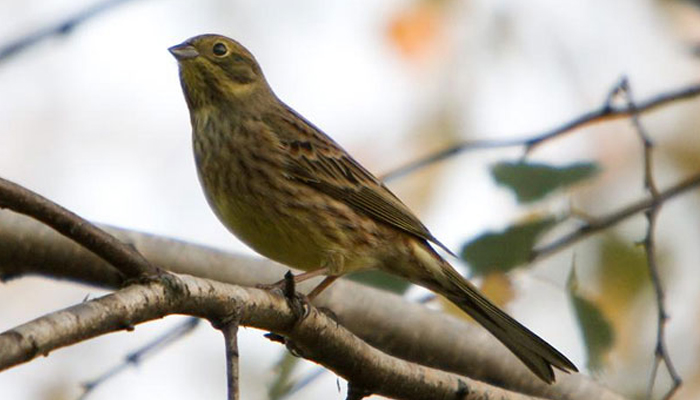
English: Yellowhammer, Yellow Bunting
Russian: Обыкновенная овсянка
Mongolian: Алтан хөмрөг
German: Goldammer
French: Bruant jaune
Japanese: キアオジ (Ki-aoji)
Body
length: 15
½ -17cm.
Breeds commonly in farmland, in bushy areas, woodland edge and wooded
pasture, in glades and clearings, on heats and coastal meadows. Predominantly
resident, but many Scandinavian birds migrate Oct-mid Nov to North Sea
countries, returning. Mar/Apr. Wary without being shy, usually flushes early;
often gains height, perches high in tree or drops into thick bushes.
Identification:
Long-tailed with unmarked red-brown rump and elements of yellow in plumage.
Mantle /back olive-brown, heavily streaked black. Bill rather small, lower
mandible light blue-grey. Much white on tail-corners, often seen I flight, when
looks longer-tailed than e.g. Reed Bunting. Flight in long undulations and
slightly jerky.
- ♂ summer: Almost
entirely yellow head with just a few dark markings on crown-and head-sides.
Saturated yellow below, with much olive-green and red-brown on breast and with
flanks streaked red-brown.
- ♀ summer: Greyish-green, streaked crown, at times
with a small yellow spot; grey-green head-side with no yellow. Underparts paler
yellow, with greyish-black streaking on breast and flanks.
- Autumn: ♂ often told
by intimation of deep yellow on head and underparts, and by olive-green and red-brown
colour on breast. ♀ rather like ♀ summer.
- 1st winter ♀ often has almost wholly
brown and streaked head and buff-white underparts with only faint yellow tinge;
note: yellow on underparts can be hard to see in field – cf. Pine Bunting!